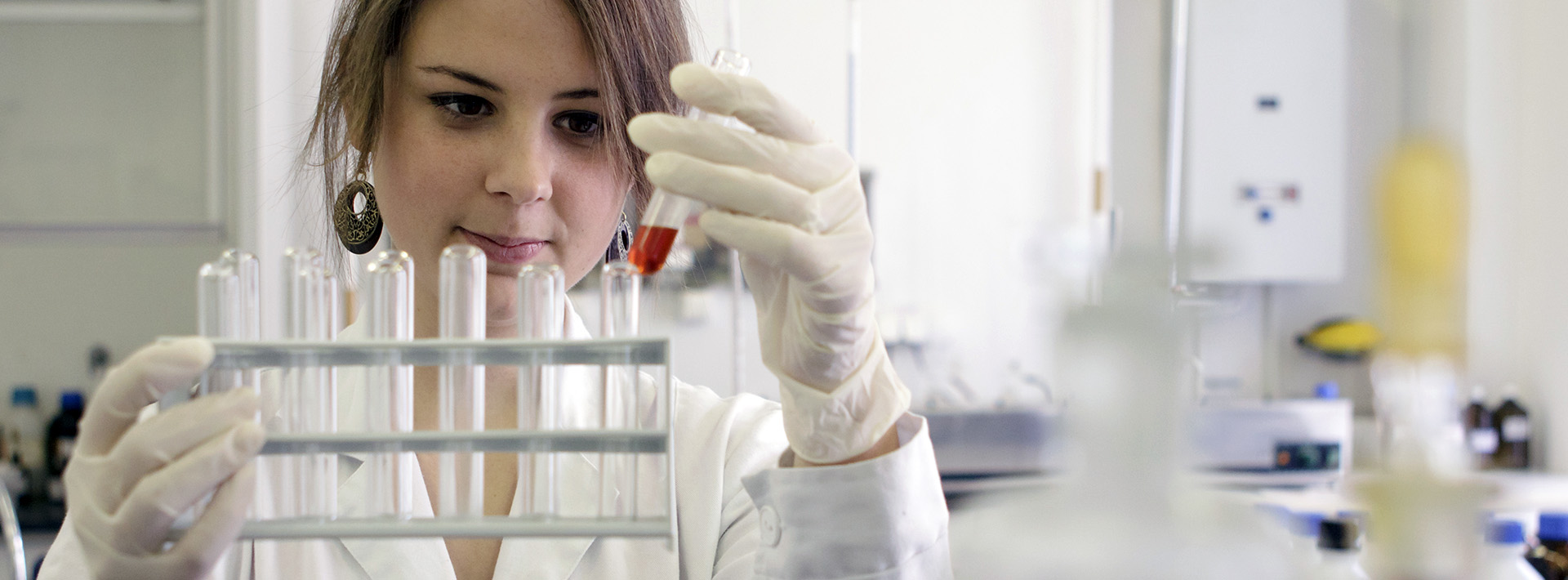Data
Official data in SubjectManager for the following academic year: 2021-2022
Course director
-
Dr. Győző Kornél KULCSÁR
assistant professor,
Department of Pharmaceutical Chemistry -
Number of hours/semester
lectures: 28 hours
practices: 0 hours
seminars: 0 hours
total of: 28 hours
Subject data
- Code of subject: OPA-L1E-T
- 2 kredit
- Pharmacy
- Basic modul
- autumn
OPA-L1G-T parallel
Exam course:no
Course headcount limitations
min. 5 – max. 65
Topic
Within the frame of the theoretical and practical trainings of this subject students will study the analytical approach of chemistry. This approach is crucial for the study of almost all pharmaceutical sciences like pharmaceutical chemistry, pharmaceutical technology etc. Students have to learn and examine the theory and practice of analytical reactions, methods, rules and calculations. Students will learn how to identify an unknown inorganic sample in both simple and complex manner of the analysis. At the end of the semester they should be able to know how to analyze an unknown sample for the most important cations and anions. Students should prove to demonstrate that they know how to use the theoretical knowledge in the pharmaceutical practice while finding out what their unknown sample is.
Lectures
- 1. Definition, principles - Dr. Kulcsár Győző Kornél
- 2. Topic of qualitative inorganic analysis - Dr. Kulcsár Győző Kornél
- 3. Equilibrium reactions in solution - Dr. Kulcsár Győző Kornél
- 4. Definition, calculations - Dr. Kulcsár Győző Kornél
- 5. Classification of chemical reactions - Dr. Kulcsár Győző Kornél
- 6. Electrode potentials - Dr. Kulcsár Győző Kornél
- 7. Sensitivity and - Dr. Kulcsár Győző Kornél
- 8. Specificity of a chemical reaction - Dr. Kulcsár Győző Kornél
- 9. Classification of the cations - Dr. Kulcsár Győző Kornél
- 10. 1st group of cations - Dr. Kulcsár Győző Kornél
- 11. 2nd group of cations - Dr. Kulcsár Győző Kornél
- 12. Separation of the first two groups - Dr. Kulcsár Győző Kornél
- 13. 3rd group of cations I - Dr. Kulcsár Győző Kornél
- 14. 3rd group of cations II - Dr. Kulcsár Győző Kornél
- 15. 3rd group of cations III - Dr. Kulcsár Győző Kornél
- 16. Separation of the 3rd group - Dr. Kulcsár Győző Kornél
- 17. 4th group of cations - Dr. Kulcsár Győző Kornél
- 18. 5th group of cations - Dr. Kulcsár Győző Kornél
- 19. Classification of anions - Dr. Kulcsár Győző Kornél
- 20. 1st anion group - Dr. Kulcsár Győző Kornél
- 21. 2nd anion group I - Dr. Kulcsár Győző Kornél
- 22. 2nd anion group I - Dr. Kulcsár Győző Kornél
- 23. 3rd anion group - Dr. Kulcsár Győző Kornél
- 24. 3rd anion group II - Dr. Kulcsár Győző Kornél
- 25. 4th anion group I - Dr. Kulcsár Győző Kornél
- 26. 4th anion group II - Dr. Kulcsár Győző Kornél
- 27. Final written test - Dr. Kulcsár Győző Kornél
- 28. Summary - Dr. Kulcsár Győző Kornél
Practices
Seminars
Reading material
Obligatory literature
A. Lásztity, J. Gyimesi: Qualitative Inorganic Analysis
Literature developed by the Department
The students will receive lecture notes (SYLLABUS) from Dr Huber.
Notes
Recommended literature
1. P.W. West, M.M. Vieck, A.L. LeRosen: Qualitative Analysis and Analytical Chemical Separations
2. H F. Holtzclaw, W. R. Robinson: College Chemistry with Qualitative Analysis
Conditions for acceptance of the semester
Maximum of 15 % absence allowed
Mid-term exams
Only those students are allowed to have exam at the and of the semester, who completed the practical course successfully.
The students will have to write two or three written midtermtests. None of them can be repeated, there is no retake. The result must be above 60%, respectively!!
Exam topics/questions
The semester is closed with a written test. In the case the result will not reach the 60% level, the student fails, she or he has to repeat the exam. In all other cases (above 60%), the student will receive a grade from qualitative inorganic analysis, based on the results of the two written tests and the overall result of the practical work throughout the semester (maximum score: 5 points).
Making up for missed classes
According to the regolations of the PTE.
Exam topics/questions
1.) Definition, principles and topic of qualitative inorganic analysis. Quality assurance and control of chemical substances and active pharmaceutical ingredients. Available reactions. Stoichiometry.
2. Equilibrium reactions in solution, definition, calculations. Acid-base theories, calculation of pH, complexes (steric structures and isomerism), precipitate formation, solubility.
3.) Classification of chemical reactions: acid-base, complex-forming, and redox reactions. Electrode potentials.
4.) Sensitivity and specificity of chemical reactions. Dilution limit, limit-concentration. Analytical equipment, methods (macro, micro, semimicro, etc.). Preliminary investigations: sample-taking, homogenization, dissolution, digestion, direct heating, flame-test, etc.
5.) Classification of the cations: 1st group of cations (Ag+, Pb2+, Hg22+, Hg2+, Cu2+, Cd2+, Bi3+).
6.) 2nd group of cations (As3+, As5+, Sb3+, Sb5+, Sn2+, Sn4+. Separation of the first two groups of cations.
7.) 3rd group of cations I. (Co2+, Ni2+, Fe2+, Fe3+, Cr3+, Mn2+, Al3+, Zn2+).
8.) 3rd group of cations II. (Co2+, Ni2+, Fe2+, Fe3+, Cr3+, Mn2+, Al3+, Zn2+). Separation of the 3rd group of cations.
9.) 4th and 5th group of cations (Ca2+, Sr2+, Ba2+; Mg2+, Li+, Na+, K+, NH4+). Separation of the 4th and 5th group. Separation of magnesium ion from the other ions of the 5th group.
10.) Classification of the anions: 1st group of anions (CO32-, HCO3-, SO32-, S2O32-, S2- and Sx2-, SiO32-, OCl-).
11.) 2nd group of anions (IO3-, BrO3-, SO42-, PO43-, B(OH)4-, F-).
12.) 3rd group of anions (Cl-, Br-, I-, CN-, SCN-).
13.) 4th group of anions (NO2-, NO3-, ClO3-, ClO4-, CH3COO-). Complex analysis: cation(s) and anion(s) in the same sample. Practices
Examiners
- Dr. Kulcsár Győző Kornél
- Dr. Perjési Pál
- Dr. Rozmer Zsuzsanna
